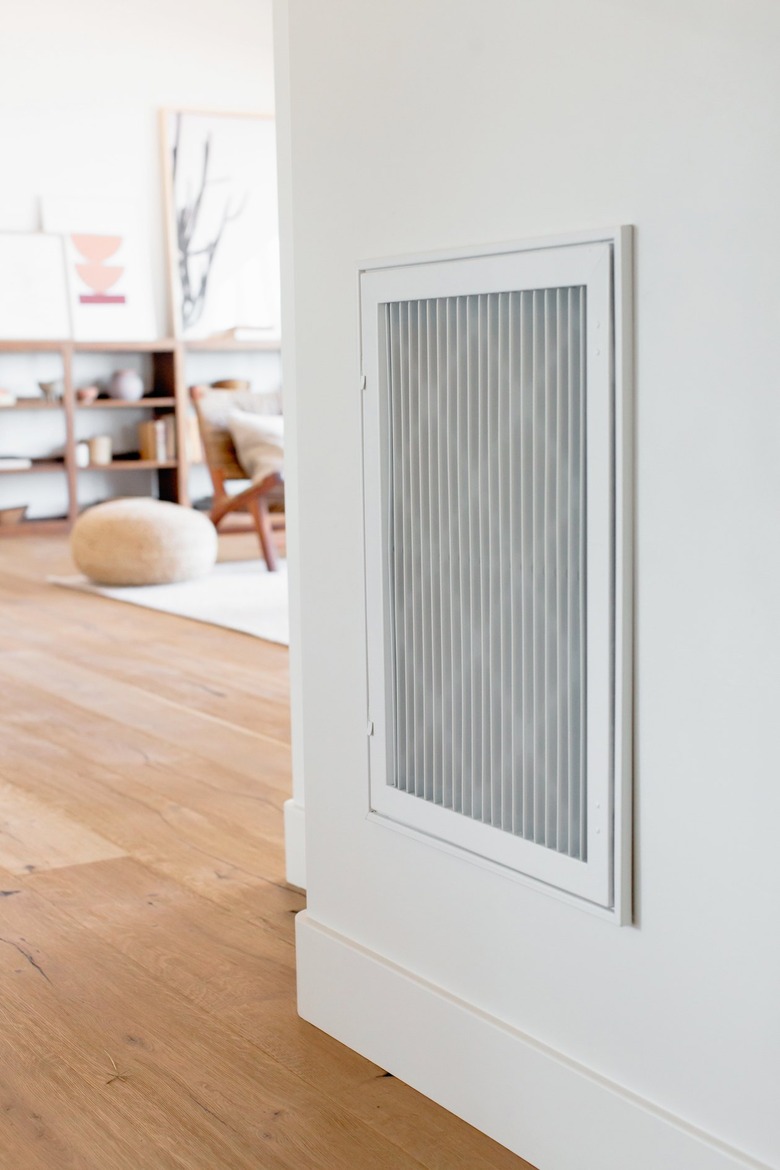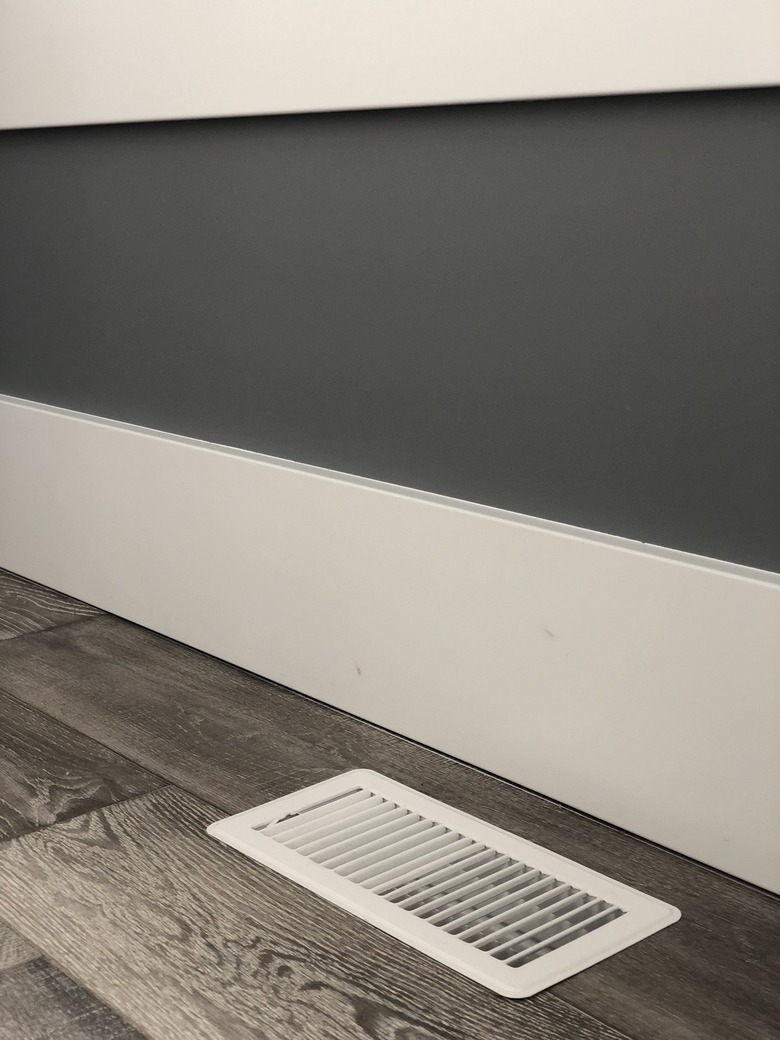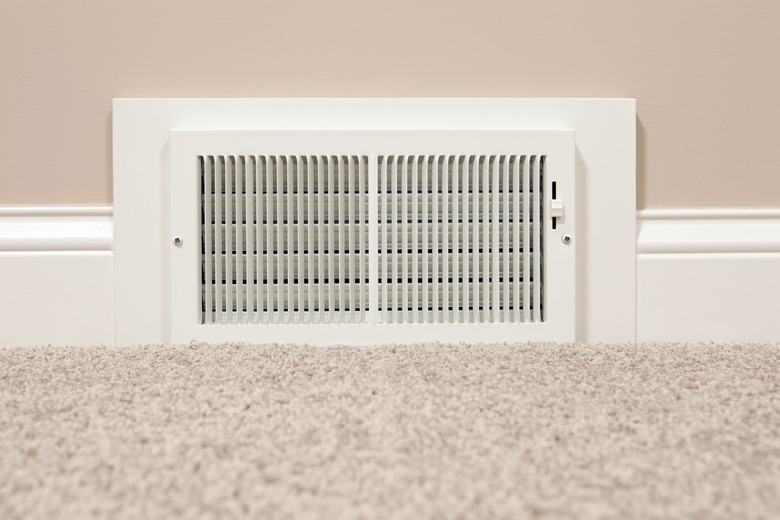Should You Get Your Air Ducts Cleaned? Here's What You Need To Know
We may receive a commission on purchases made from links.
Considering the importance of clean air, you may be wondering if air duct cleaning should be on your home maintenance list. A full-on duct cleaning isn't a job homeowners can normally do themselves, so you have to call a pro. The average cost for air duct cleaning is $35 per vent, and most homes have at least 10 vents, including the return vents, so you'll be adding $350 or more to your cleaning budget. Even though this is a fairly modest expense, no one needs an extra bill, and you may be wondering if it's even worth it.
The answer is that it's complicated. The U.S. Environmental Protection Agency (EPA) has addressed the issue of duct cleaning in the context of the broader issue of indoor air quality and considers the current state of research to be insufficient to offer a blanket recommendation. It even ventures to say that no evidence shows that air duct cleaning prevents health problems. Cleaning the ductwork can even create new health problems for sensitive people by dislodging particulate matter stuck to the duct walls that would have stayed there but for the efforts to remove them.
This is not to say you should forget about ever cleaning your ducts. Clean ducts are vital for proper airflow, which is necessary for the health of all the occupants of the building as well as for the HVAC system itself, which can overheat and shut down if a buildup of dust in the duct system interferes with ventilation. That's why duct cleaning companies exist, and if you ever decide you need one, choose wisely.
Tip
You should get your air ducts cleaned when you see mold growth, you have an infestation of vermin or you can see dust coming out of the air vents. However, it's unknown whether sanitizing air ducts is beneficial for air quality, as many air duct cleaning companies like to claim.
When Is Air Duct Cleaning a Good Idea?
When Is Air Duct Cleaning a Good Idea?
While the health benefits of air duct cleaning are questionable when it comes to removing allergens and tiny particulates, the EPA specifies three situations in which the agency recommends it:
- Mold growth is visible in any part of the system, including around the edges of the vents on the inside of the ducts just beyond the vent openings, on the supply register or on an air filter.
- You have an infestation of vermin, including rodents or insects.
- There is so much particulate matter and debris in the vents that you actually see dust coming out of the supply registers when the blower is on.
Poor insulation is the most common cause of the growth of mold and other pathogens inside ducts. Moisture condenses out of the air and collects on the sides of metal ducts when there's a temperature differential between the inside and outside of the duct. This can happen on a hot day when the air conditioner is on or on a cold day when the heating system is running. Water also tends to condense onto the evaporator coils for an air conditioning or heat pump system, and mold could grow there if dirty filters are restricting airflow.
In any of these situations, vent cleaning is just one step in the remediation process. If condensation is causing mold to grow, the system needs to be insulated, which can be done by wrapping the exposed ducts with duct wrap. In the case of mice and other vermin in the ducts, you obviously have to get them out and find out how they got in so you can prevent another infestation. Finally, if your ducts are dirty enough to be spewing dust into the living space, it's apparent that you haven't been cleaning and replacing your filters as often as you should.
What About Sanitizing the Ducts?
What About Sanitizing the Ducts?
In the 1990s, the Canada Mortgage and Housing Corporation, a government organization, conducted a study to determine, among other things, whether duct cleaning made indoor air healthier. It tested 33 homes in the Montreal area before and after duct cleaning and found no significant improvement in air quality, which agrees with the EPA's findings from conducting a similar test. The study didn't address the efficacy of modern sanitizing methods using ozone or chemical biocides, however, and many duct cleaning services will recommend one of these modern sanitizing methods to neutralize contaminants that may be clinging to the duct walls.
The bottom line is that no one knows for sure whether sanitizing the ducts actually works, and it could even be harmful. Ozone is a corrosive gas and lung irritant that the EPA considers a pollutant, and some people may be more reactive to biocides than to the particulates already in the vents. Broadcasting these sanitizers into the vents can end up releasing them into the living space. Before you contract this service from a duct cleaning company, it's important to first make sure the company is licensed by the National Air Duct Cleaners Association (NADC) and then to see the label of any biocide it intends to use.
All biocides currently registered for use with the EPA are for use on metal ducts only and not on ducts lined with or made entirely of fiberglass duct board. Unlike metal, this material is porous, and if mold has gotten a foothold, the introduction of a water-based biocide might only make the problem worse. The easiest way to prevent a mold infestation is to keep the inside of the ducts as dry as possible, and well-placed plants can also keep the air healthy in your house. Once mold has become established, however, plants won't help, and encapsulation may become necessary.
What Is Encapsulation?
What Is Encapsulation?
Encapsulation is the method used by duct cleaning services to deal with dust and pathogens clinging to duct walls made or lined with fiberglass duct board. Encapsulation is also known as sealing because the process also results in all ductwork leaks being sealed, although there are other ways to do that — the simplest being to cover leaky joints and holes with aluminum foil tape. Besides sealing in pathogens, encapsulation also seals the fraying edges of worn fiberglass duct joints and prevents the fibers from blowing through the system and out the vents. If a fiber duct system was installed before the 1980s, encapsulation is more of a necessity than an option because the ductwork as well as the tape used to seal the joints could include asbestos.
Encapsulation is a job that can only be performed by a licensed professional, and the main reason people do it is to seal small leaks in older systems. The process involves pressurizing the system to identify the leaks and applying an aerosol sealer selectively to those areas, and a pro could use the same sealer to lock in mold wherever it is discovered. However, neither the EPA nor any of the major duct cleaning organizations, such as the NADC, recommend sealing ducts from the inside as a way to control mold and other pathogens. Application of a sealant seldom results in complete coverage, and little is known about the flammability or toxicity of the materials commonly used. The best way to deal with mold is to physically remove it and keep the ducts dry so it won't grow back.
It's also possible to encapsulate metal ducts entirely from the outside by spraying them with polyurethane foam. This insulates the ducts and makes them airtight, and that can make the difference between dry and moisture-filled ducts in a crawl space or attic. Moisture is the main contributor to mold growth, so exterior encapsulation usually results in cleaner ducts.
Contracting an Air Duct Cleaning Company
Contracting an Air Duct Cleaning Company
Among the many reputable companies you can call, there are a few less ethical ones that will offer you a good deal but do an inferior job. To ensure you're working with one of the reputable companies, you should ask to see its license. Besides certification from an organization such as the NADC, air duct cleaners in several states are required to have a state license. Even licensed pros don't always do the best possible job, though, so you should also do some background research, including:
- Asking for references and following up by calling them.
- Checking with the local Better Business Bureau or the city or county office to see if anyone has registered a complaint. Checking Yelp reviews doesn't hurt.
- Interviewing prospects to learn about their level of experience and their safety procedures. Don't sign anything unless you're 100 percent sure the company will do all it can to protect the health of the occupants. If you have fiberglass ducts, make sure the company is familiar with the cleaning standards set forth by the North American Insulation Manufacturers Association.
- Asking for a timeline and a cost estimate based on the number of hours the job will last or the size of the duct system. Avoid lowball estimates. Remember that you get what you pay for.
In an effort to get business, a company may conduct an inspection and report the presence of mold. Don't take the company's word for it; ask to see it and take a sample in for testing if you can. The EPA recommends duct cleaning only if the mold is visible. Keep in mind that mold looks just like dirt and can only be positively identified in a lab.
What Duct Cleaning Involves
What Duct Cleaning Involves
After conducting an inspection to make sure no part of the duct system contains asbestos, a duct cleaning service will vacuum the ducts, and to ensure none of the particulates end up in the home, the vacuum either exhausts outside the building or includes a HEPA filtration system. While vacuuming, the duct cleaners will also brush loose particulate matter from the duct walls using an appropriate brush. The workers may have to make access holes to reach all parts of the duct system, and the job obviously entails patching these holes and sealing them to make them airtight.
The vacuum cleaner and brushes used in the process are specialty equipment that only duct cleaning companies have, so a whole-system cleaning isn't something you as a homeowner can do yourself. However, there are small things you can do that can make a big difference. You can:
- Remove the grilles from all the vent registers, take them to the sink and wash them thoroughly with soap and hot water. If there is mold on any of the grilles, this is the recommended way to clean it.
- Wipe down the duct walls around the vent openings with soapy warm water as well as inside the openings as far as you can reach.
- Rent a powerful vacuum with a long hose and vacuum inside the vent openings as far as the hose will reach. This is a good DIY procedure if you see dust coming from the ducts when the blower is on, but it's no substitute for professional cleaning if you're trying to control allergens.
- Open the furnace and wipe down the heat exchanger. If you have a cooling system, open the air handler and wipe down the cooling coils with a rag or brush them off with a soft brush. Just as it does for a refrigerator, cleaning the coils will improve the operation of the system, and it will also improve indoor air quality.
- Replace dirty filters. To keep your central air system in top form, you should do this at least once a year but do it more often if they seem to be getting dirty quickly. You can also put an individual filter underneath every vent cover and change it often.


